
Rash on the face - almost every person has encountered this problem. The reasons for its occurrence are quite varied. It is important to understand that the appearance of rash elements is not always signs of any disorder in the functioning of internal organs. A small rash can appear quite unexpectedly and causes some inconvenience to a person. If such damage to the skin is not eliminated in time, it may cause scars to appear on the face (as a result of healing).
Since this skin lesion occurs regardless of age (this also occurs in infants) and gender, treatment is prescribed according to individual characteristics, such as the type of rash, its quantity and the reasons for its manifestation.
Etiology
The reasons for the expression of a rash on the face have a wide range of diversity, and a person cannot always recognize them on his own. Thus, the factors causing a rash on the face in adults are:
- hormonal changes. This group includes: puberty in adolescents, pregnancy in women, premenstrual syndrome;
- prolonged stressful situations;
- taking certain medications without apparent need or prescription;
- deficiency of vitamins in the body;
- allergic reactions to food;
- abuse of nicotine or alcoholic beverages;
- poor diet, which includes long breaks between meals or a predominance of junk food in the diet;
- low-quality components of cosmetic products, as well as makeup not washed off before bed;
- injuries;
- prolonged exposure to cold temperatures or direct sunlight, as well as solariums;
- presence of dermatological diseases;
- disorders of the functioning of the gastrointestinal tract or kidneys;
- staying in a poorly ventilated area;
- diabetes;
- the influence of parasites or the bite of poisonous insects;
- HIV infections.
Those factors that are associated with inflammatory processes or dysfunction of internal organs require immediate consultation with specialists.
The reasons for the appearance of a rash on the face of a newborn who has not reached one month of life:
- formation of hormonal levels;
- allergies, most often due to non-compliance with the diet by the mother;
- too warm clothes, which inexperienced mothers usually try to dress their babies in;
- poor facial hygiene;
- change in ambient temperature background;
- gastrointestinal disorders;
- decreased immunity;
- hereditary factors.
Most often, the rash in infants appears in the first month of life and in most cases goes away on its own, leaving no marks on the skin. But this does not mean that the child does not need to be shown to the attending physician.
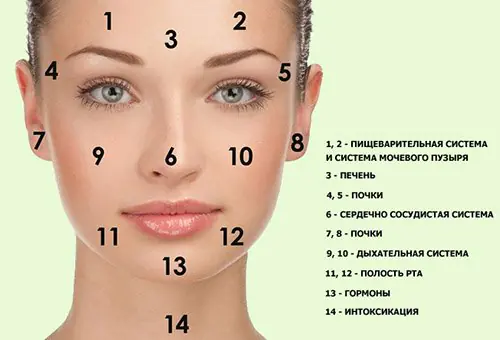
Varieties
A rash on the face can appear in several ways. Depending on the reasons for the expression, this skin disorder may look like:
- red rash on the face - occurs due to hormonal imbalance. In infants less than one month old, it may be postpartum - it appears due to diaper rash or sweat, and with an uncomplicated course it goes away on its own. In children of preschool or school age, it may be caused by chickenpox or measles. In such cases, it is necessary to show the child to a doctor;
- acne on the face is a separate type of rash that occurs during puberty in adolescents. Often observed between the ages of twelve and eighteen. The appearance of acne in people over thirty years of age indicates a serious illness. For facial acne in adults, they need to undergo a full examination in a clinic;
- subcutaneous rash on the face - located in the deeper layers of the skin;
- purulent rash - occurs during pregnancy, improper functioning or complete absence of the thyroid gland;
- allergic rash on the face - appears due to the use of low-quality cosmetics or as a reaction to food;
- minor rash - the main causes of the manifestation are considered to be improper diet and nutrition, failure to maintain personal hygiene, and hormonal changes. It may be colorless, in which case the main factor is prolonged exposure to direct sunlight.
Acne on the face has its own classification and can be:
- inflammatory;
- not inflammatory.
The inflammatory form, in turn, is divided into:
- ordinary – juvenile acne that goes away on its own by the age of eighteen;
- conglobate - large pimples that resemble a ball can become inflamed and transform into cysts;
- fulminant - wounds quickly appear at the site of the rash, resembling ulcers in appearance. Leads to a general deterioration in health and intoxication. Most typical for guys between thirteen and seventeen years old;
- mechanical - based on the name, appears due to prolonged external exposure to the skin. For example, in winter, when people wear hats, acne appears on the forehead.
Symptoms
The rash in a baby less than one month old and an older child usually does not show any symptoms. But in some cases, often with concomitant diseases, the following symptoms may be expressed:
Pronounced symptoms of such skin damage are present only in cases of a rash appearing on the face of an adult - for infants, the appearance of a rash does not threaten health and goes away on its own in about a month.
Diagnostics
There are no special diagnostic measures for a rash on the face. For an experienced specialist, it will not be difficult to identify the disease by external signs. Diagnosis may only be necessary if the cause of the rash is a dysfunction of the internal organs. In such circumstances, it is necessary to carry out a full diagnosis using:
- collecting information about all the patient’s diseases;
- exclusion or confirmation of a hereditary factor;
- conducting general and biochemical blood and urine tests;
- hardware examination of the gastrointestinal tract.
Treatment
If the causes of a rash on the face of a child or an adult, other than acne, are not diseases of the internal organs, treatment can be carried out at home. In cases of disorder in the functioning of one or more organs, their functioning is corrected with medications (for each person individually, depending on the factors of occurrence).
The following will help get rid of facial rashes in adults:
- restriction from stress or unpleasant communication;
- taking antidepressants;
- eating only healthy foods enriched with vitamins. Eliminate fatty, spicy, salty foods from the diet;
- complete cessation of bad habits;
- change or discontinuation of use of cosmetics;
- adjusting the time spent in the sun or in the solarium. You should also use protective creams, wear Panama hats and sunglasses.
Treatment of a newborn less than a month requires compliance with the following rules:
- regular facial hygiene with clean and warm water;
- maintaining a constant air temperature in the room where the baby is located - at the level of twenty-one degrees, and humidity not lower than 70%;
- exclude foods that can cause allergies (provided you are breastfeeding your child);
- Never use baby skin care products that contain alcohol.
Thus, parents can get rid of the baby’s rash themselves. But in the case when most of the newborn's face is covered with a rash, it must be shown to a doctor.
You can get rid of this disorder with the help of folk remedies, but you should not do this if you find a rash on the face of an infant.
At any age, even with proper care, a small red rash may appear on the skin. As a rule, such rashes occur spontaneously and may disappear after 3-7 days. Should I worry if a red rash appears on my cheeks or chin, and how to deal with it? We will talk about this in the publication.
Causes of red rashes
A skin rash in an adult cannot occur without a reason. Even if such a problem is not regular, it indicates serious changes in the body. There are a number of factors that most often provoke small red rashes in adults and adolescents:
In any case, treatment of a rash must begin with establishing its cause. Sometimes you can identify the factor that provoked the disease yourself, but most often only a dermatologist can determine the cause and prescribe the correct treatment.
Rash on forehead
Red rashes on the forehead may indicate serious internal diseases. Its location will help determine the cause of such a rash:
- Redness in the central part of the forehead indicates disturbances in the functioning of the small intestine.
- Rashes on the upper part of the forehead near the hair are a sign of disease of the large intestine.
- Disturbances in the functioning of the rectum often manifest themselves in the form of redness on the left side of the forehead.
- A red rash along the hairline and temples indicates bladder disease.
- Functional disorders of the adrenal glands can cause redness in the eyebrow area.
In addition, a small rash on the forehead often appears as a result of disruption of the endocrine system or hormonal imbalance.
Rash on chin
A small red rash on the chin often appears in adolescents during puberty, as well as in women suffering from hormonal imbalance. If you find small red spots on your chin, contact a dermatologist and get tested for hormone levels, which will reveal the cause of the rash.
However, a rash on the chin does not always indicate serious disorders in the body. The reason may be the banal habit of propping up your face with dirty hands, as a result of which the pores become clogged with pathogens.
Rash on the neck
Rashes on the neck can be caused by both general causes characteristic of this disease and special factors:
- hormonal disbalance;
- allergies (food, seasonal or to cosmetics);
- diseases (rubella, measles, meningococcemia, typhus, scarlet fever, diabetes mellitus and others);
- insufficient hygiene of the neck area;
Treatment of red rash
Treatment for a rash in an adult is prescribed by a doctor after determining the cause of the disease. For an initial examination, it is recommended to visit a dermatologist and therapist, but you may also need to consult a gastroenterologist, neurologist, gynecologist, allergist or endocrinologist.
In case of hormonal imbalances, acne treatment is prescribed by a dermatologist or endocrinologist. Therapy includes taking hormonal drugs, antibiotics and localized drugs (ointment or cream). For seasonal rashes, antiallergic drugs are prescribed, and for vitamin deficiency, vitamin complexes.
There are also certain rules that must be followed when a rash appears on the face, regardless of the factors that provoked it:
- Quitting alcohol and smoking.
- Refusal of decorative cosmetics (foundation, powder, blush, eye shadow).
- Do not mechanically influence damaged areas (squeezing pimples, using scrubs). Such actions usually lead to the spread of the skin rash and worsen the situation.
- During treatment, all hygiene items (towels, toothbrush, soap) must be individual.
- When washing your face, try not to injure your skin. Gently wipe problem areas with a towel.
- During treatment, you should not expose your body to heavy physical activity or stress.
- It is recommended to adhere to proper nutrition (limit the consumption of sweet, fatty, salty and smoked foods), and also avoid exotic fruits and vegetables.
- It is necessary to avoid hypothermia of the body, and vice versa, limit exposure to the sun.
- Strengthen your immunity.
Folk remedies for skin rashes
If a red rash appears on the face, you should immediately consult a doctor, because only a specialist will be able to identify the cause of the disease and prescribe the correct treatment. To make the therapy more effective, you can use folk remedies, but only after consultation with a dermatologist!
The most effective folk methods for treating red rashes are masks, lotions and compresses.
Masks
- Plantain mask. Finely chop the green plantain leaves. Apply the resulting mass to the damaged areas. Rinse off with warm water after 20 minutes.
- Raspberry mask. Grind fresh raspberries into a paste. Apply the composition to the face. Rinse off with warm water after 10 minutes.
- Walnut mask. Grind the nuts in a blender or masher, add a little olive oil to them. Apply the mask on your face for 10-15 minutes, then rinse off with warm water.
Lotions
- Aloe lotion. Take a few lower leaves of the plant, chop them and squeeze out the juice. Apply aloe juice to damaged areas of the skin.
- Calendula lotion. Take 1 tablespoon of calendula leaves and pour a glass of boiling water over them. After the mixture has cooled, place it in the refrigerator for an hour. Use lotion to wash your face morning and evening.
- Lotion from coltsfoot. Take 20 g of fresh coltsfoot leaves, pour boiling water over them (1 cup). Wipe problem areas with lotion every day.
Compresses
- 1 tbsp. dry elderberry, pour boiling water (400 ml) and leave the mixture for 20 minutes. After this, strain the infusion. Use it as a compress every day.
- 1 tsp pour 1 cup of boiling water over birch buds. Place the mixture on the fire, bring to a boil, after 10 minutes remove from the heat. Make cold infusion compresses every day.
- You can also use freshly brewed green tea (chilled) for compresses.
Preventing skin rashes
Prevention of skin rashes includes a set of measures aimed at overall strengthening of the body, as well as reducing the harmful effects of various substances on the skin:
- Strengthen your immunity, do not overheat in the sun and do not overcool your body.
- Eat right. Limit your consumption of too fatty, salty, spicy foods, and sweets.
- Take proper care of your skin. Do not use comedogenic skin care products, avoid lotions and tonics containing alcohol.
- Select only high-quality decorative cosmetics based on hypoallergenic ingredients. If possible, avoid foundation or replace it with mineral powder.
- Avoid stress and strong emotional turmoil.
- Adhere to the principles of a healthy lifestyle: eat fresh vegetables and fruits (in reasonable doses), spend more time in the fresh air and play sports. Stop drinking alcohol and smoking.
For more information about why a red rash appears and how to deal with it, watch the following video:
Remember that the beauty and health of the skin directly depend on the general condition of our body. Most skin problems and diseases can be easily avoided if you take care of your health and listen to your own body.
Sudden rashes on the face can indicate both serious problems in the functioning of internal organs and a violation of skin care rules. A rash on the face of an adult requires attention, since in some cases scars may appear after the pimples heal.
Types of rashes
Most often, adults are bothered by the following types of skin rashes on the face:
- bubbles;
- ulcers;
- dense nodules;
- acne;
- closed comedones;
- subcutaneous acne.
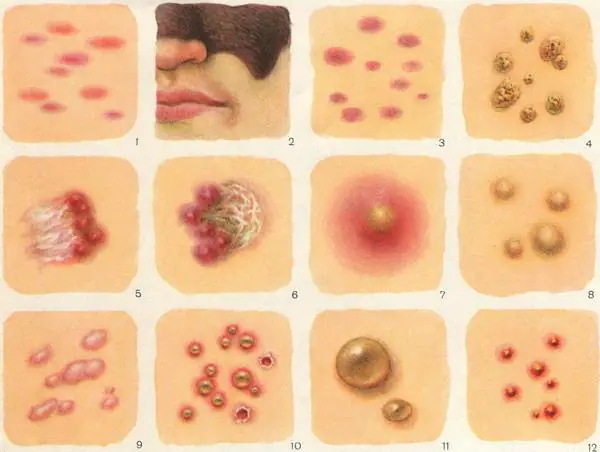
The blistering rash is often accompanied by redness of the skin. The bubbles are small in size and their contents are most often transparent. This type of rash may be accompanied by itching.
A pustular rash is in many ways similar to a vesicular rash, but the contents of the rash have a yellowish or greenish tint. The skin around the ulcers becomes inflamed, and pain is felt when pressing on the source of inflammation.
Dense nodules on the skin may be pink in color. They rise slightly above the epidermis and may itch and peel.
Acne is inflammation in pores that are clogged due to excess sebum. Such rashes are located superficially; a distinctive feature is the presence of a visible white or yellow rod in the acne.
Closed comedones are clogged pores. When comedones are damaged and infected, inflamed acne forms in their place.
A small subcutaneous rash on the face appears due to the inflammatory process when the skin becomes infected. These pimples look like small pink bumps. When pressing, pain may occur.
Causes of the rash
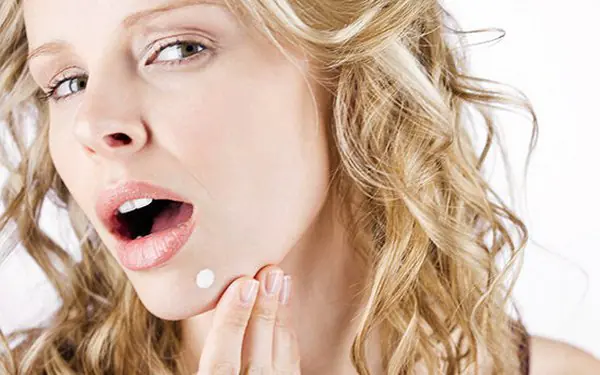
Different types of rash have different causes. If a rash suddenly appears on the face, the following possible causes of this reaction are identified:
- endocrine dysfunction or hormonal imbalance;
- allergic reaction;
- hives;
- skin irritation;
- chronic diseases of the gastrointestinal tract;
- stress;
- negative impact of climatic factors.
A small red rash on the face may be due to an allergic reaction. In this case, either small bubbles or dense nodules may appear on the skin. If you notice a small, colorless rash that itches, hives may be the likely cause.
Pink nodules on the skin may appear in response to skin irritation from chemicals. Also, such rashes are observed with severe weathering and prolonged exposure to ultraviolet radiation.
Small blisters with white liquid often form as a result of a food allergy or an allergic reaction to medication.
Hormonal imbalance can manifest itself in the formation of acne or subcutaneous pimples. This problem is faced by patients with thyroid dysfunction, adolescents, and women during pregnancy. The formation of such acne can be observed in women in the last days of the menstrual cycle, which is associated with increased activity of the sebaceous glands.
In chronic diseases of the gastrointestinal tract, an increase in the production of sebum is observed, resulting in a purulent rash on the face.
Large ulcers on the skin of the face may indicate an infectious lesion of the epidermis.
Small allergy rashes usually appear on the chin and cheeks. In this case, a colorless rash on the face is characterized by itchy blisters or nodules. An allergic reaction is also indicated by swelling of the epidermis in the affected area.
Small acne on the face associated with hormonal imbalance most often affects the forehead and chin, since these areas are characterized by increased fat content.
Treatment principle
How to get rid of a rash on the face depends on its type. If small acne appears on the face, you must first determine the cause of this disorder and only then begin treatment. In order not to harm your own health or worsen your skin condition, it is recommended to consult a dermatologist before starting self-treatment.
To get rid of rashes, first of all, you should stop using any cosmetics, review your diet and stop taking any medications. This will eliminate allergic reactions and skin irritation due to the use of incorrectly selected cosmetics.
It is necessary to remove all allergenic foods from the diet, such as milk, chocolate and some types of fruit.
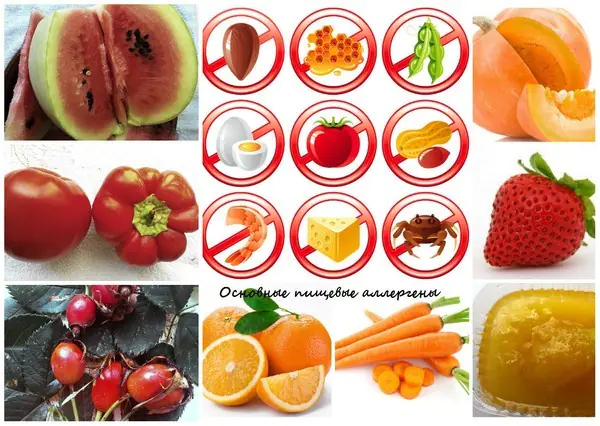
You should wash your face with plain water, without using soap or cosmetics to remove makeup. You also need to give up decorative cosmetics for a while.
If, a few days after eliminating all kinds of irritants, the rash has not gotten smaller, you should definitely consult a doctor.
Treatment depends on the cause and nature of the rash. So, in case of allergic reactions, it is necessary to take antihistamines and use ointments to reduce swelling and inflammation of the epidermis in order to remove the rash.
Treatment of subcutaneous pimples and acne involves drying out inflammation and using cosmetics to normalize the functioning of the sebaceous glands.
Bacterial rashes are treated with antibiotic tablets and ointments. Since such inflammation can itch, additionally take antihistamines.
Regardless of the type of rash, antiseptic skin treatment should be carried out regularly. This is necessary in order to avoid accidental infection.
A white rash can appear suddenly and for no apparent reason, so the best remedy for rashes on the face is a timely visit to a specialist. Since such a skin reaction can be provoked by internal disorders of the body, the patient needs to undergo examination and cure the disease that caused the appearance of acne and rash.
Effective means
If the skin rash on the face is acne or comedones, treatment includes the use of drying agents. Such products are applied precisely to areas of inflammation.
In case of inflammation of the epidermis, it is necessary to use special ointments. For severe urticaria, ointments containing corticosteroids are used for this purpose, however, such drugs can only be used as prescribed by a doctor due to the large number of side effects or contraindications.
The first thing a patient should do if they have an allergic skin reaction is take an antihistamine. Anti-allergy tablets will quickly relieve itching and relieve swelling of the skin.
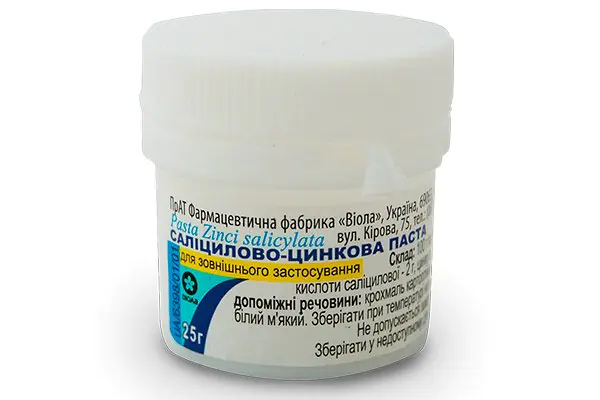
To treat infected acne, antibiotic ointments and anti-inflammatory drugs are used. Levomekol and salicylic ointment can be used for this, but before using these drugs you should consult a dermatologist.
If you notice that there is a small rash on your face, you should under no circumstances try to squeeze it out. It should be remembered that if you remove acne at home, there is a high probability of skin infection.
Be sure to regularly carry out antiseptic skin treatment. In order not to dry out the epidermis, antiseptic solutions should be applied pointwise to areas of inflammation. At home, you can use a solution of chlorhexidine or decoctions of medicinal herbs. Alcohol tinctures of chamomile, sage, calendula and eucalyptus have good drying and antiseptic properties. These drugs are easy to purchase at the pharmacy.
For washing, you can use a decoction of chamomile. It is very simple to prepare - just brew two tea bags from this plant in a glass of boiling water. You can also use dried flowers. Pour a large spoonful of flowers into a glass of hot water and leave for one hour.
Fresh aloe juice will both remove the inflamed rash and speed up the maturation of large subcutaneous pimples. To treat the skin, cut off one leaf of the plant and apply the cut to the affected epidermis for a few seconds. The treatment is repeated twice a day.
For severe acne, treatment should only be prescribed by a dermatologist. Incorrect use of medications chosen independently without consulting a doctor can only worsen symptoms.
An allergic rash usually goes away on its own after the exposure to the irritant is eliminated. If the rash is caused by internal malfunctions of the body, it is not the rash that should be treated, but the underlying disease, since acne in this case is a secondary symptom.



